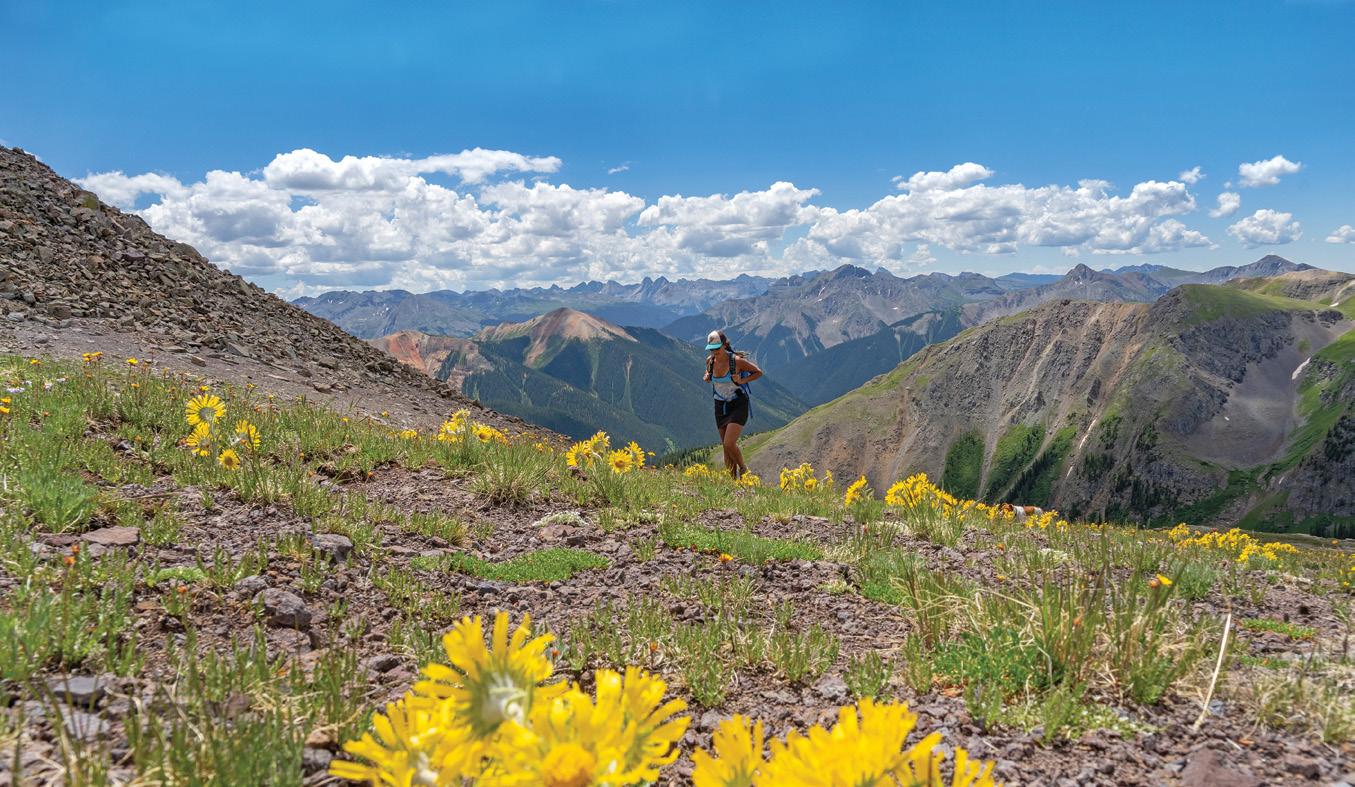
3 minute read
Making Our Hearts Happy
How the Telluride Mountain Club works to keep the region’s trail system robust
BY JESSE JAMES M c TIGUE
Arobust trail system is akin to the circulatory system in our bodies. Vital to overall health, trails connect us to the outdoors, pump blood through our veins and make our hearts happy.
The tasks of planning, improving and maintaining such a system is the work of the Telluride Mountain Club, led by Executive Director Heidi Lauterbach and Trails Director Jordan Carr.
Their work, Lauterbach explains, is guided by a number of factors, including a 2019 trails sustainability plan that, importantly, contains an updated inventory of trails, plus proposals for improvements, and a 2022 regional trails survey, which found that over 78 percent of respondents wanted to see new trails, connectors, reroutes or an expansion of the trail inventory. “We’ve identified seven different areas regionally where we can better connect to current trails to improve our trails system and provide a better user experience that the community is seeking,” she adds.
Given the region’s terrain, environmental considerations and landownership issues, any work on the trails network takes careful planning. “The trail has to sustain itself,” Lauterbach says. “We must consider the impact of huge rains, then drainage
and erosion. We consider the topography and features to determine where to put switchbacks. Then there are land-use issues — private versus public land, wilderness versus non-wilderness and so on.”
In proposing new trails, the mountain club works with various entities including the U.S. Forest Service, San Miguel County, the Towns of Telluride and Mountain Village and other stakeholders before putting trails proposals through the proper processes and NEPA (National Environmental Protection Agency) analysis.
Carr has considerable experience in trail building with 10 years working as a professional, including time at the International Mountain Biking Association, as well as on projects in Switzerland, Austria, Italy, Japan, United Arab Emirates, North Macedonia and Finnish Lapland. He says of current plans, “It takes about three years of process planning for one year of trail construction. We’ve given our proposals
to the forest service, but nothing has been passed through NEPA yet. My guesstimate is we’re about five to seven years before we will see this project realized on the ground.”
In the meantime, both Carr and Lauterbach encourage recreationists to get on the mountain club’s website and social media sites and let them know about existing, real-time trail conditions and maintenance needs. Says Lauterbach, “With Jordan, we can do trail quick fixes fast.”
As for immediate projects, Lauterbach and Carr say they are both excited about the Mill Creek Eider Connector and the new Jud Wiebe Bridge completed last summer. This summer’s priorities are significant maintenance on the T-35 trail just south of Mountain Village, and reroute work on the west end of the Deep Creek Trail. And, of course, there is trail clean-up and maintenance.
Says Carr, “It’s big work getting the trails open in the springtime.”
Those of us who plan to make our hearts happy on area trails this summer can only be grateful.
SUPPORT OUR TRAILS
With the Opt-in for Trails program, the Telluride Mountain Club partners with local businesses to raise funds for trails. Participants identify a way to donate that is best for them and their customers, including a 1 percent donation or a round-up option at checkout, or other customized giving. The Telluride Tourism Board, for instance, donates proceeds from the Telluride Calendar, available for purchase at Between the Covers and at telluride.com. Visit telluridemountainclub.org/ opt-in-for-trails/ for more.










